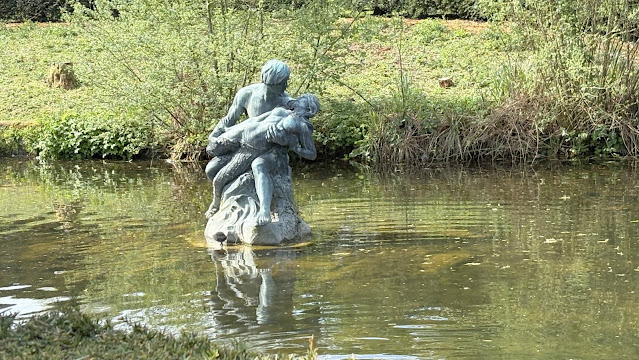We parked and then started walking. This is a view of the house. It was originally founded as an abbey in the 12th century but then it was surrendered to King Henry VII during the dissolution of the monasteries. In the 16th century the abbey was converted to a country house and now it operates as a hotel.
We got to the bit of the lake which is opposite the house. Lots of ducks and geese and the children were enjoying feeding them seeds that had been purchased from the shop.
It must be nice staying in this hotel, not just the grandeur, but also having the park at one's disposal.
We stayed for a while - it was fun watching what people were up to
This was the Duck Decoy. Decoys are originally from Denmark and the word decoy comes from the Dutch eendekooi meaning duck cage. This decoy is made up of four arms or pipes. These arms would have been spanned by metal hoops, which supported a tunnel of netting with tall reed screens along the arm that hid the decoy man and his dog, which resembled a fox. The decoy man would send the dog between the screens.
The ducks, thinking the dog was a fox, would swim towards it, to keep it in sight. Then the ducks were gradually lured down the arm until they would be scared into a net at the bottom and captured. In one year at Coombe 1,500 ducks were taken from the decoy.
This is a circular walk, on the edge of the park, so we came to a point where we could look out of the woods - flat countryside
We then came to a large area on our right that was fenced - it's the park's heronry.
Apparently, records on Coombe's heronry go back over 220 years. It supports 60% of Warwickshire's heron population, with an average of 55 pairs per year.
There's quite a few of these around the park, forming a memorial trail where people can honour and remember their loved ones. Leaves that have been cast from one of Coombe's oak leaves get attached with the name of a loved one who has died











































No comments:
Post a Comment